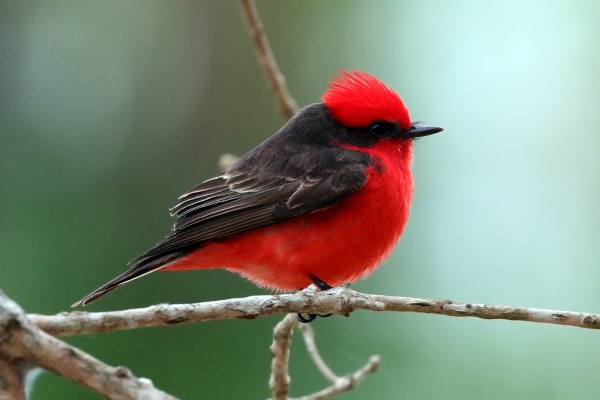Facts About Vermilion flycatcher
The vermilion flycatcher is a small, eye-catching bird native to South America and parts of southern North America. Males are especially vibrant, sporting a striking vermilion-red plumage, while females have a more subdued appearance. These birds favor riparian habitats and open areas where they can easily catch insects in mid-air.
Although generally monogamous, vermilion flycatchers exhibit intriguing behaviors such as extra-pair copulation and within-species brood parasitism. First described in the 1830s, the species' taxonomy was revised in 2016, leading to the recognition of new species from what were once considered subspecies.
The International Union for Conservation of Nature (IUCN) classifies the vermilion flycatcher as a species of least concern, thanks to its large population. However, there have been reports of population declines in certain areas.
These birds inhabit regions from Mexico to parts of Central and South America, preferring environments close to water. Their diet mainly consists of insects like flies, grasshoppers, and beetles. Known for their distinctive vocalizations and territorial behavior, vermilion flycatchers build cup-shaped nests and lay eggs from March to June, with chicks fledging after about 15 days.
While popular among birdwatchers, the vermilion flycatcher is not commonly kept in captivity due to the difficulty of maintaining its vibrant colors. They face threats from habitat loss, particularly in riparian zones, and changes in water management. Notably, the San Cristóbal flycatcher, once part of this species, has gone extinct, and Darwin's flycatcher is now considered vulnerable.
Despite experiencing some population declines, the vermilion flycatcher demonstrates resilience by adapting to human-altered landscapes. Nevertheless, ongoing conservation efforts are crucial to protect their habitats and address threats to ensure the long-term survival of this stunning bird.

 Brazil
Brazil